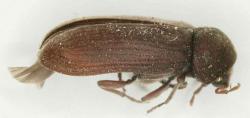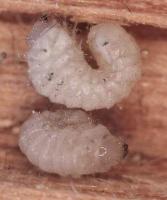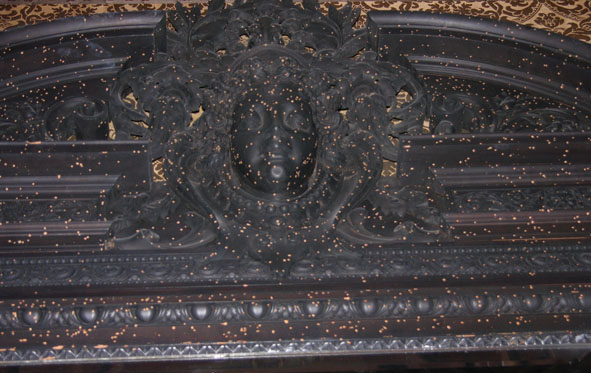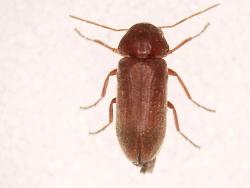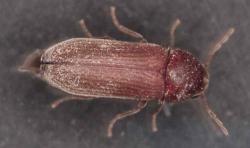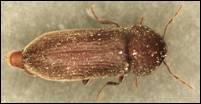The biology of that species is fairly close to that of other Anobiidae (Anobium punctatum and Nicobium castaneum) (cf. fact-sheets). However, Oligomerus ptilinoides is strictly xylophagous whereas other borers can develop to the expense of more diversified materials (books, paper, archives).
Adults are good fliers. They are active from early spring through September, with increased emergence in July and August.
That is when small heaps of faecal bore-dust can be seen at the level of infested materials
Females lay about 30 eggs on an average (many more in optimal conditions); of a milky-white colour, hard enough to spot due to their very small size (about 0.5 mm). Eggs are laid in several steps, over a several-week-long period, in wood cracks and vessels or in former galleries. Incubation lasts between 12 and 15 days. New-born larvae immediately bore galleries in the wood to start feeding.
As in the case of mo
st xylophagous insects, larval development length very much depends on the nutrient quality of the base, on temperature, on ambient hygrometry and on the presence of lignin-degrading fungi.
It can last between 8 and 36 months, even longer if conditions are not favourable. Development is optimal when temperatures are around 22°C, with ambient relative humidity between 55 and 60%, and when humidity inside the wood is between 11 and 16% with temperatures ranging between 20 and 32°C.
If humidity inside the wood is higher than 20%, larvae are often infested and killed by moulds.
Larval development is stopped when temperatures are below 12°C. Larvae can fast for about 3 months.
Nymphosis takes place under the wood surface, in spaces built by larvae. Adults’ exit holes are circular.
Average full cycle length (from egg to adult) is about 1 year in Mediterranean regions, and 2 or 3 years in more temperate climate zones.
Adults do not feed and do not cause any direct damage. They live about 4 weeks or a little more.


 Vrillette brune
Vrillette brune  Furniture beetle Woodworm
Furniture beetle Woodworm  Carcoma
Carcoma  Nagekäfer
Nagekäfer 